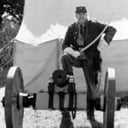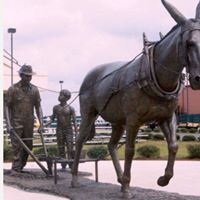What is a peen?
A peen is the (usually) hemispherical end of the head of a machinist's hammer, that is the end opposite the flat striking face of the hammer and which is used especially in metalworking for bending, shaping, or cutting. The hemispherical peen is distinguished from a cross-peen hammer, diagonal-peen hammer, point-peen hammer, or chisel-peen hammer, all commonly used by blacksmiths during the forging process to deliver blows for forging or to strike other forging tools.
The word "peen" probably comes from a North Germanic source; compare dialectal Norwegian “penn” (“peen”), Danish “pind” (“peg”), German “pinne” (“the peen of a hammer”), Old Swedish “pæna” (“to pound iron with a hammer”).
The first known use of “peen” was as a verb around 1522 in the meaning as defined above. In 1683 it began to be used use as a noun, again in the meaning as defined above.
In the Dutch language a “peen” is a carrot.
More Info:
www.merriam-webster.com








